The Scalextric Ford Mustang GT4 is a brand new car for 2020.
The Mustang really caught my eye as an unpainted prototype at Scalextric HQ back in January. It was an unexpected addition to the predominantly GT3 range, but the real-life Mustang GT4 is a fabulous-looking car and competitive in its class in all the big GT series.
- Buy the RACE Performance Mustang: www.jadlamracingmodels.com/scalextric-slot-car-c4182-ford-mustang-gt4-british-gt-2019-race-performance/
- A digital version is also available: www.jadlamracingmodels.com/scalextric-digital-slot-car-c4182-ford-mustang-gt4-british-gt-race-performance/
- The Multimatic Motorsport car: www.jadlamracingmodels.com/scalextric-slot-car-c4173-ford-mustang-gt4-british-gt-2019-multimatic-motorsports/
The Real Ford Mustang GT4
The Mustang GT4 was developed jointly by Ford Performance and the Canadian company Multimatic from the Ford Shelby GT350R-C. It was earmarked to compete in sports car championship racing series around the world, including the IMSA Continental Tire SportsCar Challenge, Pirelli World Challenge GTS/GT4, and various European GT4 series, including the British GT Championship.
The works Multimatic team entered two cars in the 2019 British GT Championship, with Scott Maxwell and Seb Priaulx giving the #15 Multimatic car GT4 pole position on debut at Oulton Park and clinched the class win in race two. A third Mustang GT4 was entered by the RACE Performance team.
The RACE Performance car was driven by former BTCC racers Sam Smelt and Árón Taylor-Smith in all nine rounds of the series. Despite high hopes, it was a disappointing season for the new team – a best result of eighth in GT4 (twenty-first overall) at Snetterton. RACE Performance finished fourteenth in the GT4 team championship, with just four points – a long way behind the Mustangs of Mutimatic Motorsports, who finished an excellent third in the table with 156 points and two class wins.
The Scalextric Model
Despite being the least successful of the British GT Championship cars, I love the look of the RACE Performance Mustang. There’s something about grey and pink on a racing car that I like – the C4015 Honda Civic (buy it here) is probably my favourite model in the BTCC range. Unlike the Civic, the Mustang has a gloss finish over most of the car, with a super-looking matt finish at the back, behind the yellow stripe. In fact, the rear of the car looks sensational, with the big chunky wing, the classic Mustang rear lights, exhaust pipes and superb detailing.
The front is pretty awesome too. Scalextric have captured the big, aggressive stance of the nose, headlights and that big splitter jutting out just above the track surface. The matt black grilles on the bonnet (or should that be “hood”?) contrast nicely with the gloss grey paintwork. All over, the small sponsor logos, driver names and detailing parts – including brake discs – make this a special car to look at.
The Mechanical Stuff
Under the body, the Mustang GT4 is typical of late 2010s / early 2020s Scalextric models. It has a shallow tray interior, giving plenty of room for the mechanical components underneath. There is a standard short-can motor in an inline configuration, driving the rear axle via a 9:27 gear ratio. The car is Digital Plug Ready (DPR) meaning it can be easily converted to digital by using the C8515 digital plug. There are working lights front and rear, each headlight mounted on its own circuit board, which takes up less room at the front of the car. I like that.
Another thing I really like is the ‘Mustang’ logo cut-out on the bottom of the underpan – it is a nice touch and something I hope will appear on plenty of future models. A feature that is a blast from the past are the two different magnet ‘pockets’. This means the magnet can be left where it is – between the motor and the rear axle – or moved to just in front of the motor. Changing the position of the magnet gives a car different handling characteristics. Moving it forward of the motor gives more ‘tail-out’ action, but better front-end grip. This option helps with more advanced race-tuning techniques.
Track Performance
I ran the car straight from the box and found it very tail-happy on my SL6 layout. It was annoyingly easy to spin in the corners as the rear tyres seemed to have very little grip. I also measured the magnetic downforce on my DIY ‘magnet marshal’ and it came out on the low side. I launched the ARC app and ran the Mustang for two minutes, clocking up fifteen laps and managing a best lap of 6.96 seconds. This compared to twenty-two laps and a 4.67 second best lap for a standard Porsche 911 RSR, which is – so far – my favourite of the Scalextric GT cars.
I routinely scuff up the rear tyres of my cars by briefly running them on some 600-grit sandpaper. This removes the gloss surface of the slick tyres and increases grip. I did this on the Mustang and repeated the two-minute run, getting up to twenty laps and a best lap time of 5.40 seconds. A huge improvement with just this one simple tweak. There were then a few other basic changes I made – loosening the body screws a turn, re-routing the rear light wires to over the rear axle and adjusting the braids. You can see how I did all this to the Mustang in the How To: Basic Tuning Tips blog post (coming soon!). The result was twenty-three laps in two minutes and a best lap of 4.75 seconds – almost as quick as the Porsche and with one more lap completed.
Not only was the Mustang fast, it was good fun to drive. It does have a tendency for the back to slide, but gives you time to catch it. The Porsche – and many other cars – just spin out or flip. Even though the Mustang is big and quite tall, I never felt it would tip. Moving the magnet to the front of the motor will increase the tail-out behaviour and although that may increase lap times a bit, it is the sort of handling I really enjoy. Usually, I would remove the magnet entirely and then tweak the car to run “non-mag”. Being able to move the magnet is a much easier procedure, but with a similar outcome.
All-in-all, I really like the look of the Mustang and I am very happy with its handling and performance, especially after some basic tweaks. I know I am going to enjoy driving the Mustang and it will be the subject of several more blog posts looking at how to tune and race-prepare a Scalextric car.
Scalextric Ford Mustang GT4 #23 “RACE Performance” Data Sheet
Catalogue code: C4182
Standard version: www.jadlamracingmodels.com/scalextric-slot-car-c4182-ford-mustang-gt4-british-gt-2019-race-performance/
Digital version: www.jadlamracingmodels.com/scalextric-digital-slot-car-c4182-ford-mustang-gt4-british-gt-race-performance/
Range: Scalextric GT Racing – 1/32 scale / high detail / Digital Plug Ready (DPR)
Released: October 2020
Spares included: 2 x brade plates with braid fitted
Lights: front and rear
Motor: Scalextric ‘short-can’ – inline orientation.
Gear ratio: 9:27
Length: 152mm
Wheelbase: 85mm
Rear axle width: 58mm
Height: 42mm
Weight: 85.7g
Andy’s downforce gauge: 32.4g magnetic downforce





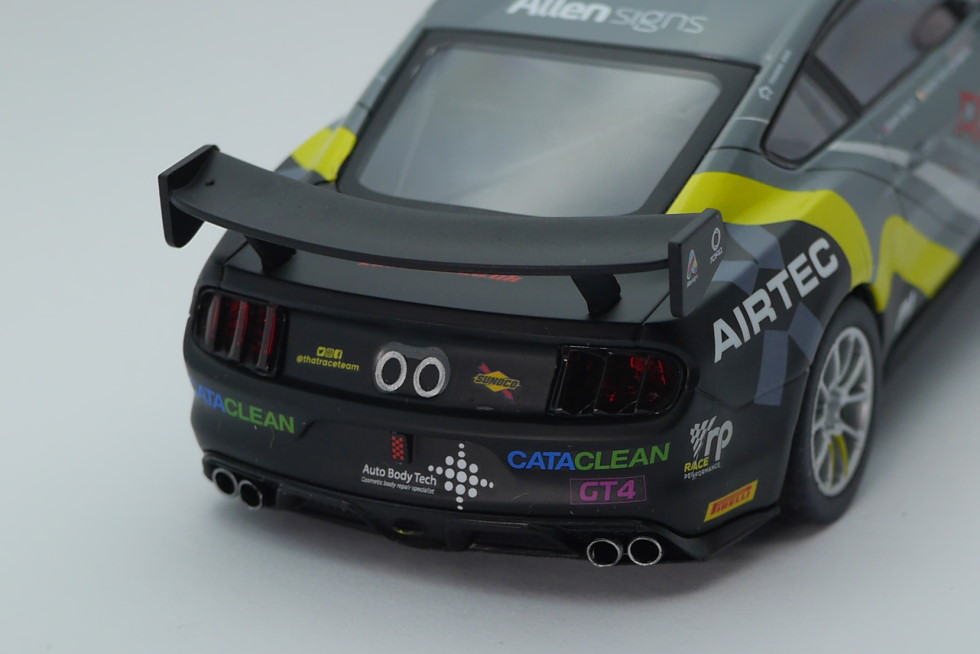
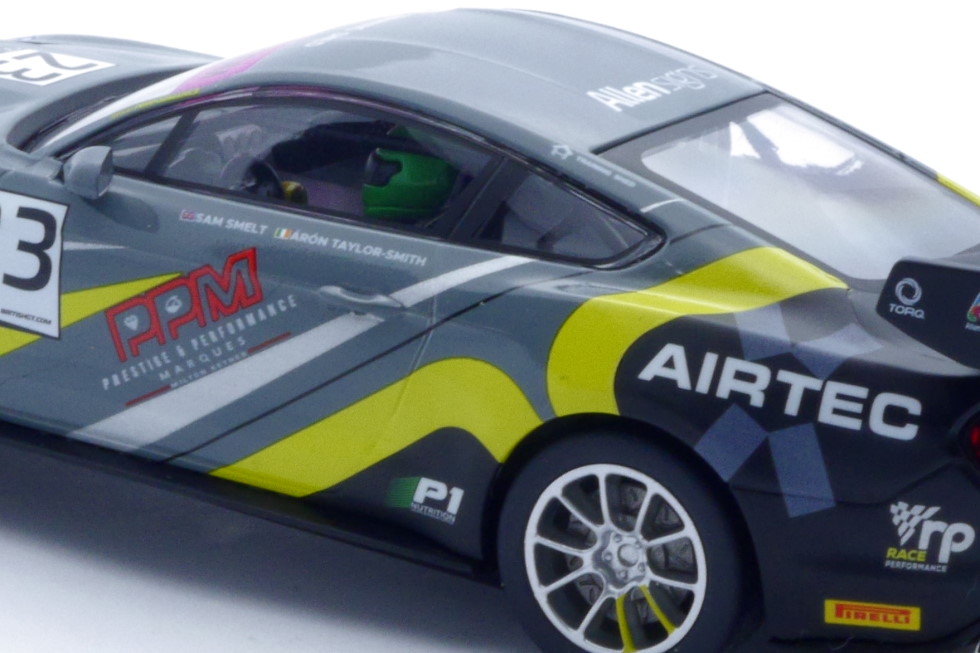
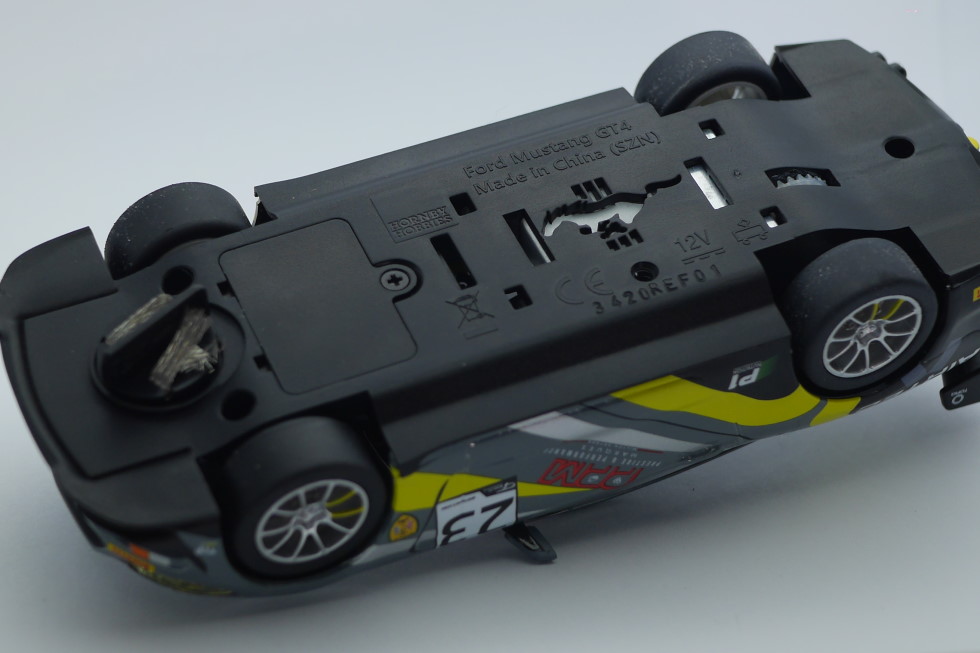
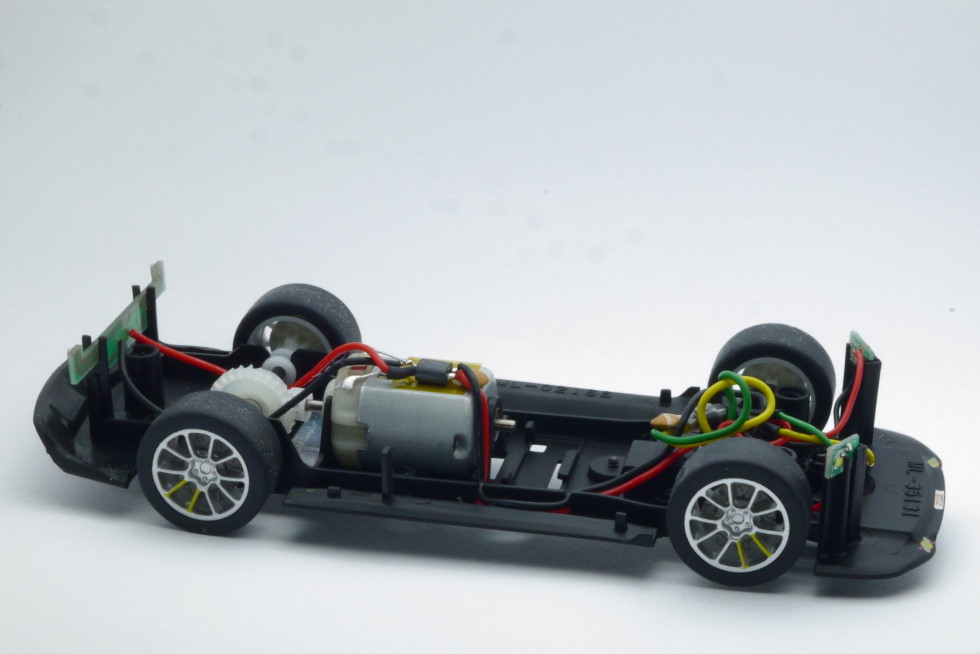
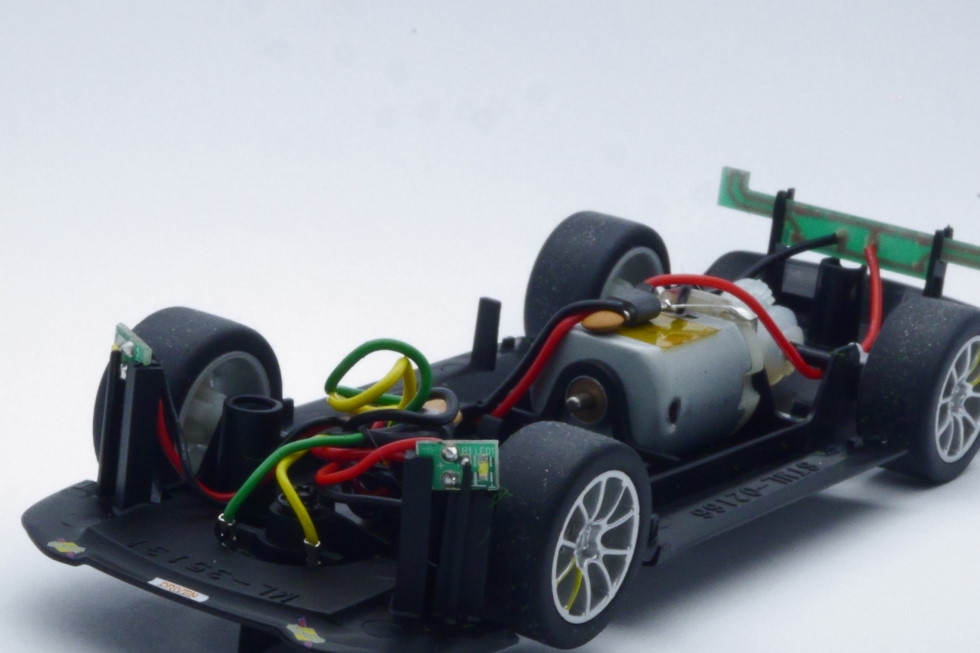



Excellent blog, continue the good work!